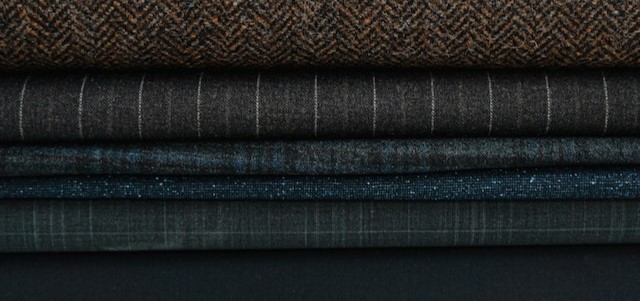 When does copying become intellectual property infringement? If you work with fashion brands or consumer products companies, the line between genuine inspiration and a lawsuit waiting to happen may be something you think about daily. A recent lawsuit filed by Patagonia Inc. against The Gap alleging infringement of Patagonia’s trademark and trade dress rights in its “Snap-T” fleece is an interesting illustration of this tension. Patagonia Inc. v. The Gap Stores, No. 22 cv 7437 (NDCA Nov. 22, 2022) (“Patagonia”). The Patagonia Complaint alleges that Patagonia has been selling a version of the “Snap-T” fleece (shown below) continuously since 1985. The Snap-T fleece contains a few unique design elements, including a contrast snap collar, an asymmetrical flap pocket (with the “P-6 Logo”[1] above it), and contrast piping at the seams.
When does copying become intellectual property infringement? If you work with fashion brands or consumer products companies, the line between genuine inspiration and a lawsuit waiting to happen may be something you think about daily. A recent lawsuit filed by Patagonia Inc. against The Gap alleging infringement of Patagonia’s trademark and trade dress rights in its “Snap-T” fleece is an interesting illustration of this tension. Patagonia Inc. v. The Gap Stores, No. 22 cv 7437 (NDCA Nov. 22, 2022) (“Patagonia”). The Patagonia Complaint alleges that Patagonia has been selling a version of the “Snap-T” fleece (shown below) continuously since 1985. The Snap-T fleece contains a few unique design elements, including a contrast snap collar, an asymmetrical flap pocket (with the “P-6 Logo”[1] above it), and contrast piping at the seams.
A visual comparison of the products is instructive. The products themselves look similar, particularly when you compare products using the same color scheme. The accused Gap Arctic Fleece product contains most of the elements that differentiate the Snap-T fleece from generic fleeces made and sold by dozens of different brands. Given the similarities, ordinary consumers may think the Gap Arctic Fleece is inspired by (or, more cynically, a knock-off of) the Patagonia Snap-T fleece. Patagonia takes that idea further and alleges that the similarities are so strong that customers will incorrectly think The Gap’s Arctic Fleece is part of a collaboration with Patagonia. Compl. at ¶18. This forms the basis of Patagonia’s claim for False Designation of Origin, claiming that The Gap’s Arctic Fleece itself constitutes the use of trade dress to falsely imply affiliation or connection with Patagonia. Compl. at ¶29.
| Patagonia’s Snap-T Fleece[2] | The Gap’s Arctic Fleece[3] |
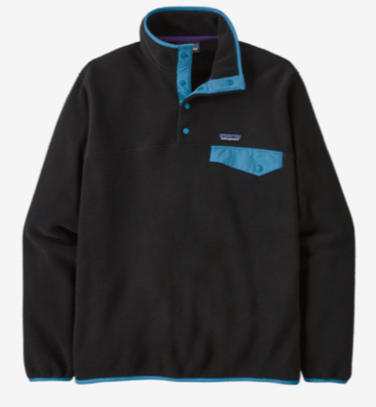 |
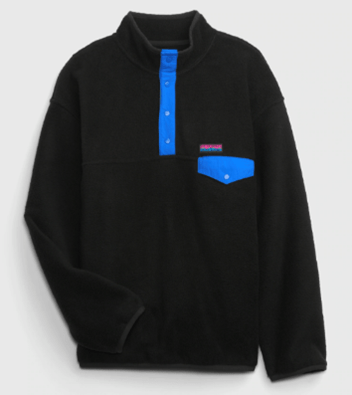 |
So far, so good! If you look at the products, it’s hard to argue that The Gap did NOT copy Patagonia’s design for the Snap-T fleece. But was anything protectable copied? Does the copying rise to a violation of law? In the Complaint, Patagonia claims that it has “trade dress” rights over the Snap-T fleece, but it does not appear that those rights are registered. Compl. at ¶13. It is also not clear what might constitute the extent of the claimed trade dress rights: the Complaint lists a “snap placket and matching pocket flap.” Id. Many brands offer variations of a ¼ zip (or button or snap) fleece (or sweater or sweatshirt) with a pocket, and many of the elements of the garment are functional rather than decorative. Except for the contrast colors on the pocket, the Snap-T fleece itself is primarily functional.
This brings us back to our original question: how should we advise our clients on copying product designs? While it is certainly important to carefully evaluate proposed designs against competing products in the marketplace, we should also look into our clients’ competitors themselves. Who, exactly, is our client picking a fight with? While we can’t prevent our clients from getting sued when they fly too close to the sun, we can make sure they understand the risk of litigation so that they can make fully informed decisions.
Patagonia is not shy about litigating to enforce its trademarks. Since 2015, Patagonia has filed 62 lawsuits that include allegations of trademark infringement in federal court. A quick scan of those complaints shows that Patagonia is very protective of its logos, even filing cases against artists creating patches that parody Patagonia itself. See Patagonia v. Mad Engine Global, No. 22 cv 3512, (CDCA May 23, 2022) (a nuclear power plant with the words “goin’ nowhere”); Patagonia v. Heftler, No. 21 cv 8678, (CDCA Nov. 3, 2021) (“Percocet”). See also Patagonia v. Trown LLC, No. 22 cv 4080, (CDCA June 14, 2022) (a “Ski Patagonia” hat referencing the geographical location).
| Accused Products in Recent Patagonia Lawsuits | ||
| Patagonia v. Heftler | Patagonia v. Mad Engine Global | Patagonia v. Trown LLC |
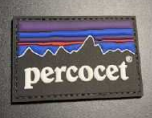 |
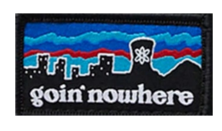 |
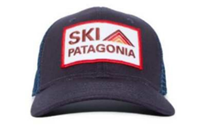 |
The Gap case is really no different: the strongest argument Patagonia has against The Gap is the one that it usually leans on in its lawsuits: its famous mountain silhouette logo (the “P-6 Logo”). The Gap’s Arctic Fleece Logo looks like Patagonia’s P-6 Logo. Without the logo, The Gap would have a strong argument that copied or not, the Snap-T fleece has nothing protectable that can be infringed. Each individual element is common. These products have been on the market for so long, The Gap may be able to prove that any “trade dress” does not actually function as a source signifier but rather fleeces are so widespread that any trade dress has become generic.
But the logo. The logo! The Gap can argue that Patagonia does not have rights over the general idea of a mountain silhouette, but rather just the exact logos they have used as trademarks. The Gap can argue the mountains are different, the skies are different, the colors are (sightly) different. But the logo! Without the logo you could argue that Patagonia does not have any protectable rights over a generic fleece and The Gap should be permitted to sell its own products and compete in the market. But adding a very similar logo—and a seemingly new logo for The Gap to boot—might tip the scales to support the argument that The Gap intentionally copied Patagonia’s overall product, using a confusingly similar logo, with the intent to confuse customers as to the source of the products. A quick search of TESS shows there are no current pending applications for “Arctic Fleece” which makes me doubt that The Gap is intending to use this as their own, new, bona fide trademark.
| Patagonia’s P-6 Logo
(U.S. Registration No. 1,547,469) |
The Gap’s Arctic Fleece Logo |
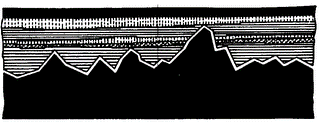 |
 |
Are customers confused? Patagonia says yes. Compl. at 4. The price points for these products are very different. The Men’s Patagonia Snap-T linked above is listed for sale at $129. A comparable Men’s Gap Arctic Fleece is listed for sale at $79.95 plus an additional 60% off (so $36). Once customers see the prices, are they still confused? Does it matter if customers are not confused but may hope that other people are confused? Should any external factors matter if there’s no registered right over the design? We shall find out!
[1] Patagonia’s P-6 logo is registered through U.S. Trademark Registrations 1,294,523 and 1,547,469, and Copyright Registration No. VA 1-801-788.
[2] Available at https://www.patagonia.com/product/mens-lightweight-synchilla-snap-t-fleece-pullover/25551.html?dwvar_25551_color=BLK (accessed November 25, 2022)
[3] Available at https://www.gap.com/browse/product.do?pid=486825002&pcid=999&vid=1&&searchText=arctic%20fleece#pdp-page-content (accessed November 25, 2022)
Written by Casey Ann Hewitt, Founder and Owner of Hewitt Law PLLC.


